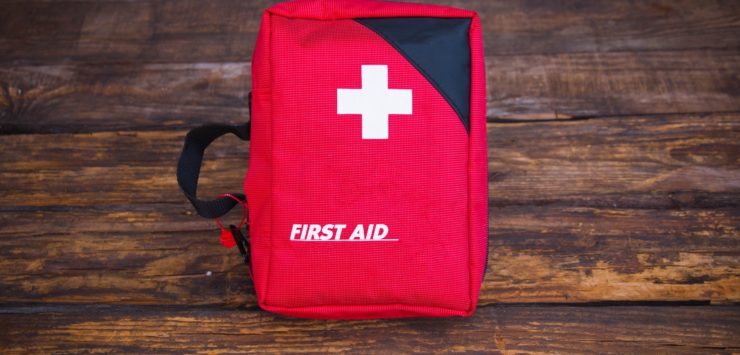
No one wants an accident to happen in the workplace – but try as we might, sometimes they’re simply inevitable. Whether it’s an unfortunate mistake or a freak event – it doesn’t make a difference. What does matter is what you do next – and that’s why first aid in the workplace is so essential. Read on to find out more about how to include first aid into the workplace – and what you need to know in the event of something un-towards happening!
First Aid Essentials
Having a first aid box on the premises is an absolute must – no matter what size your organisation is. Even if your workplace is relatively low risk, having the basic supplies to deal with minor injuries can be really helpful. If you’re not sure what your kit should include, remember, a little help can always be provided.
But if your workplace faces more serious risks, then a basic kit won’t do – instead, you’ll need to have a trained first aider on your team, and to do that, you need to carry out a first aid needs assessment.
First Aid Needs Assessment
There aren’t any fixed, cut and dry rules about what first-aid facilities riskier organisations need to have in place. It all depends on the particular challenges you encounter – which makes a needs assessment all the more important.
So what should the needs assessment cover?
One of the first questions to ask is the potential level of risk present, and what hazards people might encounter – both people working on site, and members of the public. To do that, you’ll want to think about the kind of work you do – the risks involved in a roofing company might be very different to someone who works underground, for instance.
You’ll also want to think about the people factor. How many staff are working, and what are their work patterns? Are they travelling, and how close are they to nearby emergency services?
What if an accident occurs?
As well as having the appropriate level of first-aid care at work, employers are also legally required to report any incidents that occur. So what should happen?
If a serious work-related accident or fatality occurs, then employers must report this to the HSE, or the loca authority’s health and safety department. This includes any kinds of major injuries, such as injured limbs, serious accidents such as gas leaks or collapsed roofs, or anything else that could prevent someone going back to work for more than three days.
In addition, all accidents – including minor ones that don’t need external reporting – should still be logged in an ‘accident book’, to help keep a useful record of what has happened. It’s also a very clear way of tracking potential risks or hazards, as you can see clearly if there is a repeated pattern of injuries occurring.
Your take away points
Accidents in the workplace definitely aren’t a trivial matter – so it’s really vital to respond to them appropriately and in a timely way.
– Make sure that your workplace has the right level of first-aid response – a small and low risk business might only need a first aid kit on site, while bigger organisations, or those that work in high risk environments, will need a trained first aider present.
– You might also need to carry out a first aid needs assessment – this involves identifying risks and potential hazards, as well as what first aid responses might be needed.
– If a serious accident does happen, then it’s the employer’s legal obligation to make sure it’s reported to the HSE.
Have any questions about what to do about your workplace risk assessments? Remember, a little help can always be provided.









LEAVE A RESPONSE